“ABB 133712-001 – Spare parts in stock” has been added to your cart. View cart

ABB 129740-002 134177-001 Intelligent I/O Module
$8,674.00 Original price was: $8,674.00.$8,058.00Current price is: $8,058.00.个
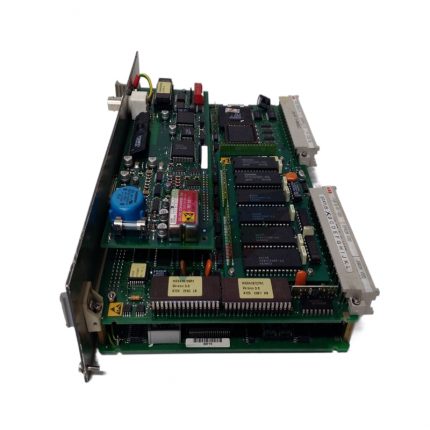
ABB T3N225 Circuit Breaker
$27,447.00 Original price was: $27,447.00.$25,378.00Current price is: $25,378.00.个
ABB XUD194 3BHE018137R0001 AC800PEC High Performance Controller
$8,733.00 Original price was: $8,733.00.$8,732.00Current price is: $8,732.00.个
The core value of the AC800PEC series controller lies in “achieving centralized control and decentralized execution of complex industrial processes”. As a high-performance model of this series, XUD194, with its powerful processor performance and rich interface resources, undertakes core tasks such as control logic operation, on-site signal processing, and system communication coordination. Its positioning is as the control center of medium to large-scale industrial automation systems, which can serve as an independent controller to achieve single machine automation control, and can also be connected to distributed control systems through industrial Ethernet to achieve multi controller collaborative work, adapting to the full scenario requirements from single machine equipment control to large-scale factory level automation.
Category: ABB
Tag: XUD194 3BHE018137R0001 AC800PEC
Description
ABB XUD194 3BHE018137R0001 AC800PEC High Performance Controller
Product core positioning and application scenarios
The core value of the AC800PEC series controller lies in “achieving centralized control and decentralized execution of complex industrial processes”. As a high-performance model of this series, XUD194, with its powerful processor performance and rich interface resources, undertakes core tasks such as control logic operation, on-site signal processing, and system communication coordination. Its positioning is as the control center of medium to large-scale industrial automation systems, which can serve as an independent controller to achieve single machine automation control, and can also be connected to distributed control systems through industrial Ethernet to achieve multi controller collaborative work, adapting to the full scenario requirements from single machine equipment control to large-scale factory level automation.
Typical application scenario classification:
-Power industry control: boiler combustion control, turbine regulation, desulfurization and denitrification system control in thermal power plants; Speed regulation and gate control of hydro generator units in hydropower stations; The comprehensive automation control of substations achieves safe and stable operation of the power production process through precise logical operations.
-Chemical and petrochemical industries: reaction process control of large-scale chemical plants (such as polymerization reaction temperature and pressure closed-loop control), material ratio control, interlock protection system; The control of distillation towers and catalytic reactions in the petroleum refining process ensures that the production process meets process indicators and avoids safety accidents.
-Metallurgy and building materials: Control of blast furnace ironmaking process in steel plants, temperature and composition control of converter steelmaking, and synchronous control of steel rolling production line speed; The control of clinker calcination and cement grinding process in cement plants improves product quality and production efficiency through real-time adjustment of process parameters.
-Batch process control: Batch production process control in the pharmaceutical and food and beverage industries, such as step-by-step reaction control for drug synthesis, sterilization time and temperature control for food processing, supporting formula management and batch data traceability to meet industry compliance requirements.
Core functions and technological advantages
1. High performance computing and real-time control capabilities
The controller is equipped with a high-performance 32-bit embedded processor, with a computing speed of hundreds of MIPS, supporting multitasking parallel processing, and a control cycle as low as 1ms. It can quickly respond to on-site signal changes and execute control logic. Built in rich control algorithm library, including PID (proportional integral derivative) control, fuzzy control, predictive control, etc., which can be directly called to achieve precise adjustment of complex processes; Simultaneously supporting user-defined functions (such as C language, structured text ST) to meet the control requirements of special processes. Real time design ensures fast execution of control instructions and avoids process parameter deviations caused by computational delays.
2. Rich I/O interfaces and expansion capabilities
The body is equipped with multiple standardized interfaces, including analog input/output (AI/AO), digital input/output (DI/DO), pulse input (PI), etc., which can directly interface with on-site sensors (such as temperature, pressure, flow sensors) and actuators (such as valves, pumps). Supports connection to I/O expansion modules through fieldbus such as PROFIBUS, PROFINET, EtherNet/IP, etc., with the ability to expand up to hundreds of I/O points and adapt to control requirements of different scales. The interface circuit adopts optoelectronic isolation design, with strong anti-interference ability, which can effectively resist electromagnetic interference in industrial sites and ensure the stability of signal transmission.
3. High reliability and redundant design
Adopting industrial grade components and modular structure design, it supports power redundancy and controller redundancy (hot standby) configuration. When the main controller or power supply fails, the backup unit can complete uninterrupted switching in milliseconds, ensuring uninterrupted control process and improving system availability. The controller has a wide operating temperature range of -20 ℃~60 ℃, with good anti vibration and anti impact performance, in compliance with the IEC 61131-2 industrial standard, and can operate stably in harsh industrial field environments. At the same time, it has a built-in and comprehensive self diagnostic function that can monitor its hardware status in real time (such as CPU, memory, interfaces), and output fault information through communication interfaces, making it easy for operation and maintenance personnel to quickly locate problems.
4. Flexible communication and system integration capabilities
Supports multiple industrial communication protocols, including Modbus, PROFINET, EtherNet/IP, OPC UA, etc., and can seamlessly integrate with mainstream monitoring systems such as ABB System 800xA, Siemens WinCC, Rockwell FactoryTalk, achieving bidirectional transmission of control data and monitoring data. Equipped with gateway function, it can realize the conversion between different communication protocols and solve the communication compatibility problem of multi brand equipment in industrial sites. By supporting multi controller collaborative work through industrial Ethernet, distributed allocation of control tasks can be achieved, enhancing the scalability and fault tolerance of the system.
5. Convenient programming and operation support
Support the use of ABB Control Builder M or programming software that complies with IEC 61131-3 standards (such as CoDeSys) for development. Programming methods include ladder diagram (LD), functional block diagram (FBD), structured text (ST), etc. Engineers can choose the appropriate programming method according to their habits. The software has a rich built-in industry application library and template program, which can significantly shorten the development cycle. Meanwhile, it supports online programming, debugging, and parameter modification without interrupting the control process; Equipped with comprehensive fault recording and data logging functions, it can store historical control data and fault information, providing data support for process optimization and fault tracing.
Key technical parameters
Basic Information
Model/Order Number
XUD194/3BHE018137R0001 (AC800PEC series)
Core operation
processor
32-bit embedded processor with a computing speed of ≥ 500 MIPS
Memory configuration
RAM ≥ 256MB, Flash ≥ 128MB (supports expansion)
Control cycle
Minimum control cycle of 1ms, supporting multi cycle task configuration
I/O interface
Body interface
8AI(4-20mA)、4AO(4-20mA)、16DI(24V DC)、8DO(24V DC)、 2 pulse inputs
extended interface
2 PROFINET interfaces, 1 EtherNet/IP interface, 1 RS485 interface (supporting Modbus RTU)
Power parameters
Working Voltage
24V DC (± 20% fluctuation range), supports dual power redundant input
power consumption
Typical value ≤ 25W, maximum power consumption ≤ 40W (including expansion module)
Environment and Structure
working environment
Temperature: -20 ℃~60 ℃, humidity: 0~95% (no condensation), altitude ≤ 2000m
Protection level
IP20 (body), installed inside the control cabinet for use
Installation method
35mm DIN rail installation, supporting vertical or horizontal installation
Programming and Protocol
Support protocols/standards
IEC 61131-3,PROFINET,EtherNet/IP,Modbus RTU/TCP,OPC UA
Key points of installation and integration
1. Installation specifications
The controller should be installed in a control cabinet that meets industrial standards, avoiding direct sunlight, rainwater erosion, corrosive gases, and strong magnetic field interference (such as large transformers and frequency converters). During installation, it is necessary to ensure a heat dissipation space of ≥ 15mm with surrounding equipment. It is recommended to equip the control cabinet with a cooling fan or air conditioner to control the ambient temperature below 60 ℃. Installed using a 35mm standard DIN rail, the controller needs to be clamped tightly during installation to ensure no looseness and prevent vibration from causing wiring disconnection or equipment damage.
2. System integration steps
1. Hardware connection: Connect 24V DC power supply (pay attention to positive and negative polarity). If redundant power supply is configured, two independent power supplies need to be connected separately; Connect on-site sensors/actuators to the main I/O interface, and connect the I/O expansion module through the expansion bus; Connect the controller to the upper monitoring system and other controllers using industrial Ethernet cables.
2. Software configuration: Create a project in Control Builder M, add the XUD194 controller model (matched by order number), configure basic information such as controller IP address, communication protocol parameters, I/O module address, etc; Configure control tasks based on process requirements (such as control cycle, task priority).
3. Program development: Select appropriate programming methods (such as FBD, ST) to develop control logic, call built-in algorithm libraries to implement PID regulation and other functions; Write communication programs to achieve data exchange with the upper system and other devices; Perform syntax checks and offline simulations on the program.
4. Online debugging and running: Download the program to the controller (supports online download), and monitor the control variables and I/O status through software; Simulate on-site signal testing to verify the correctness of control logic, adjust PID parameters and other control parameters; Verify the stability of the communication link to ensure normal data transmission.
Common faults and troubleshooting methods
Fault phenomenon
Possible reasons
Troubleshooting method
The controller cannot start and the power indicator light is not on
Power supply not connected, power cord loose, power module malfunction, abnormal voltage
Use a multimeter to measure whether the input voltage of the power supply is within the range of 24V DC ± 20%; Check if the power cord connection is secure, unplug and tighten the terminals again; Replace the backup power supply for testing. If it still cannot be started, the controller power module needs to be repaired.
Communication interruption, the upper system cannot connect to the controller
IP address configuration error, communication cable failure, communication protocol mismatch, network equipment failure
Check whether the IP address and subnet mask of the controller and the upper system are in the same network segment; Use a network cable tester to check if the communication cables are unobstructed; Confirm that the communication protocol (such as PROFINET, Modbus) configurations of both parties are consistent; Check if network devices such as switches and routers are working properly.
I/O signal unresponsive or abnormal acquisition
I/O wiring error, sensor/actuator malfunction, I/O module malfunction, signal interference
Check if the I/O signal wiring is correct (such as AI signal positive and negative poles, DI signal power supply); Test the sensor/actuator separately to confirm that its output signal is normal; Replace the spare I/O module for testing and eliminate module faults; Check whether the signal cable uses shielded wires, whether the shielding layer is reliably grounded, and reduce electromagnetic interference.
Abnormal execution of control logic and large deviation of process parameters
Program logic errors, unreasonable control parameter settings, processor overload, insufficient sensor accuracy
Monitor the program execution process online through programming software and troubleshoot logic errors; Re tune PID and other control parameters to ensure compatibility with the process; Check the CPU usage of the controller, and if it is too high, optimize the program (such as splitting high priority tasks); Calibrate the sensor to ensure the accuracy of the collected signal.
Redundant switching failed
Redundant configuration error, backup controller failure, redundant communication link interruption
Verify redundant configuration parameters (such as primary and backup priority, switching conditions); Check the operation status of the backup controller to ensure that it is fault free; Check the redundant communication cables between the primary and backup controllers to ensure smooth connectivity.
Maintenance and upkeep suggestions
To ensure the long-term reliable operation of the controller, it is recommended to develop a regular maintenance plan (once every 3 months for industrial scenarios and once a month for critical control scenarios). Before maintenance, it is necessary to ensure that there is a backup control plan to avoid affecting the production process
-Cleaning and appearance inspection: Use a dry brush or compressed air to remove dust from the surface and heat dissipation holes of the controller, check for cracks or deformations in the housing, and ensure that the indicator light is functioning properly; Check if the wiring terminals are loose, overheating, or discolored. If so, tighten them again.
-Power and communication inspection: Measure whether the input voltage of the power supply is stable and whether the switching function of the redundant power supply is normal; Test the stability of the communication link, check if the communication cable connectors are secure, and check the communication packet loss rate through the upper system.
-Program and data backup: Regularly backup the control program, configuration parameters, and historical data in the controller, store them in a secure device, and avoid data loss caused by controller failure; Verify the consistency between backup data and operational data.
-Performance monitoring: Monitor the CPU usage, memory utilization, I/O module status, and other operating parameters of the controller through programming software. If there are abnormal fluctuations, the cause should be promptly investigated; Test the self diagnostic function to ensure the reliability of fault detection.
-Environmental maintenance: Check the temperature and humidity inside the control cabinet to ensure compliance with the working environment requirements of the controller; Clean up the debris inside the control cabinet and check if the cooling system (fans, air conditioning) is working properly.
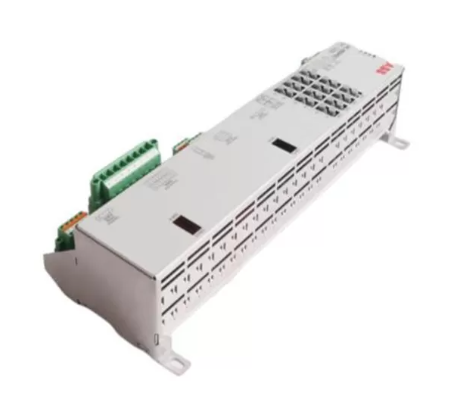
Additional information
| Weight | 3.37 lbs |
|---|---|
| Dimensions | 473 × 483 × 367 in |
Reviews (0)
Be the first to review “ABB XUD194 3BHE018137R0001 AC800PEC High Performance Controller” Cancel reply
Shipping and Delivery


MAECENAS IACULIS
Vestibulum curae torquent diam diam commodo parturient penatibus nunc dui adipiscing convallis bulum parturient suspendisse parturient a.Parturient in parturient scelerisque nibh lectus quam a natoque adipiscing a vestibulum hendrerit et pharetra fames nunc natoque dui.
ADIPISCING CONVALLIS BULUM
- Vestibulum penatibus nunc dui adipiscing convallis bulum parturient suspendisse.
- Abitur parturient praesent lectus quam a natoque adipiscing a vestibulum hendre.
- Diam parturient dictumst parturient scelerisque nibh lectus.
Scelerisque adipiscing bibendum sem vestibulum et in a a a purus lectus faucibus lobortis tincidunt purus lectus nisl class eros.Condimentum a et ullamcorper dictumst mus et tristique elementum nam inceptos hac parturient scelerisque vestibulum amet elit ut volutpat.




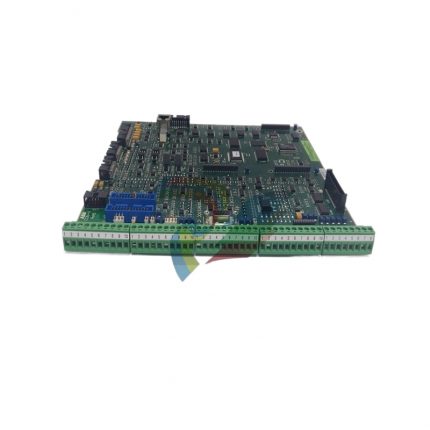



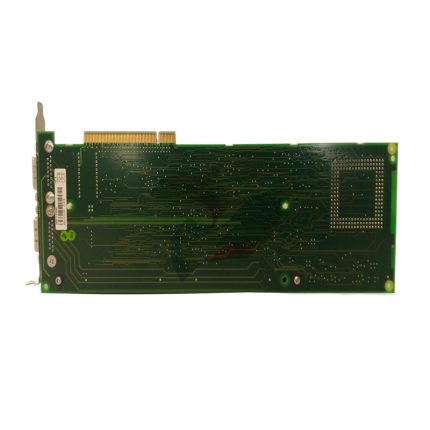


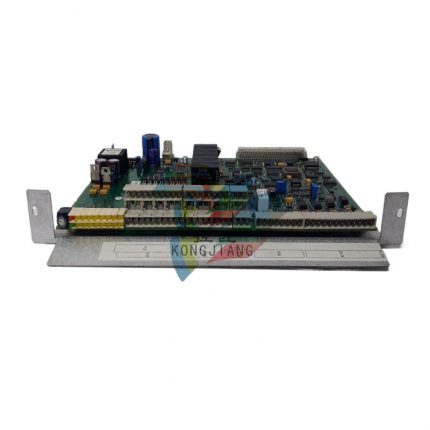
Reviews
There are no reviews yet.